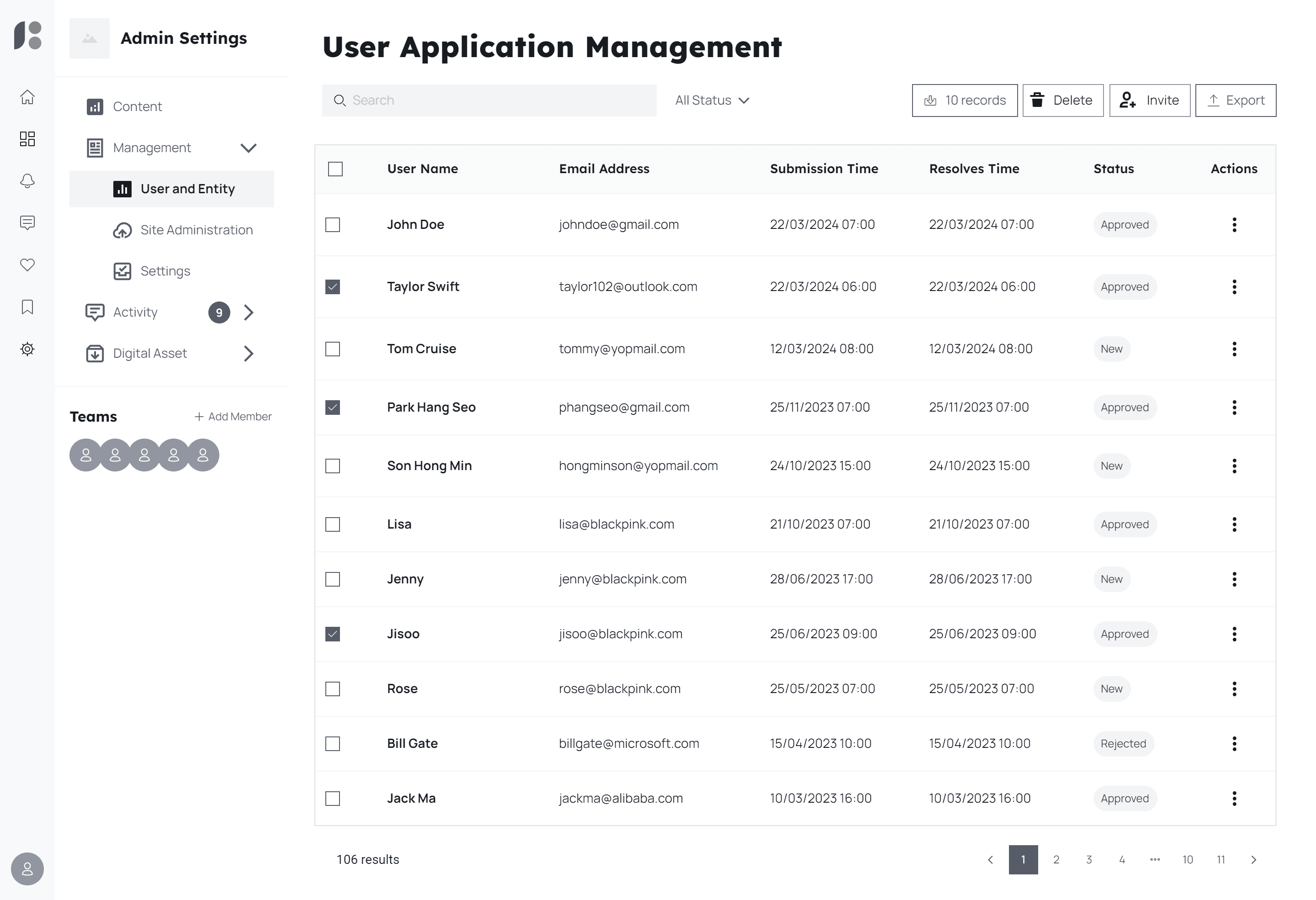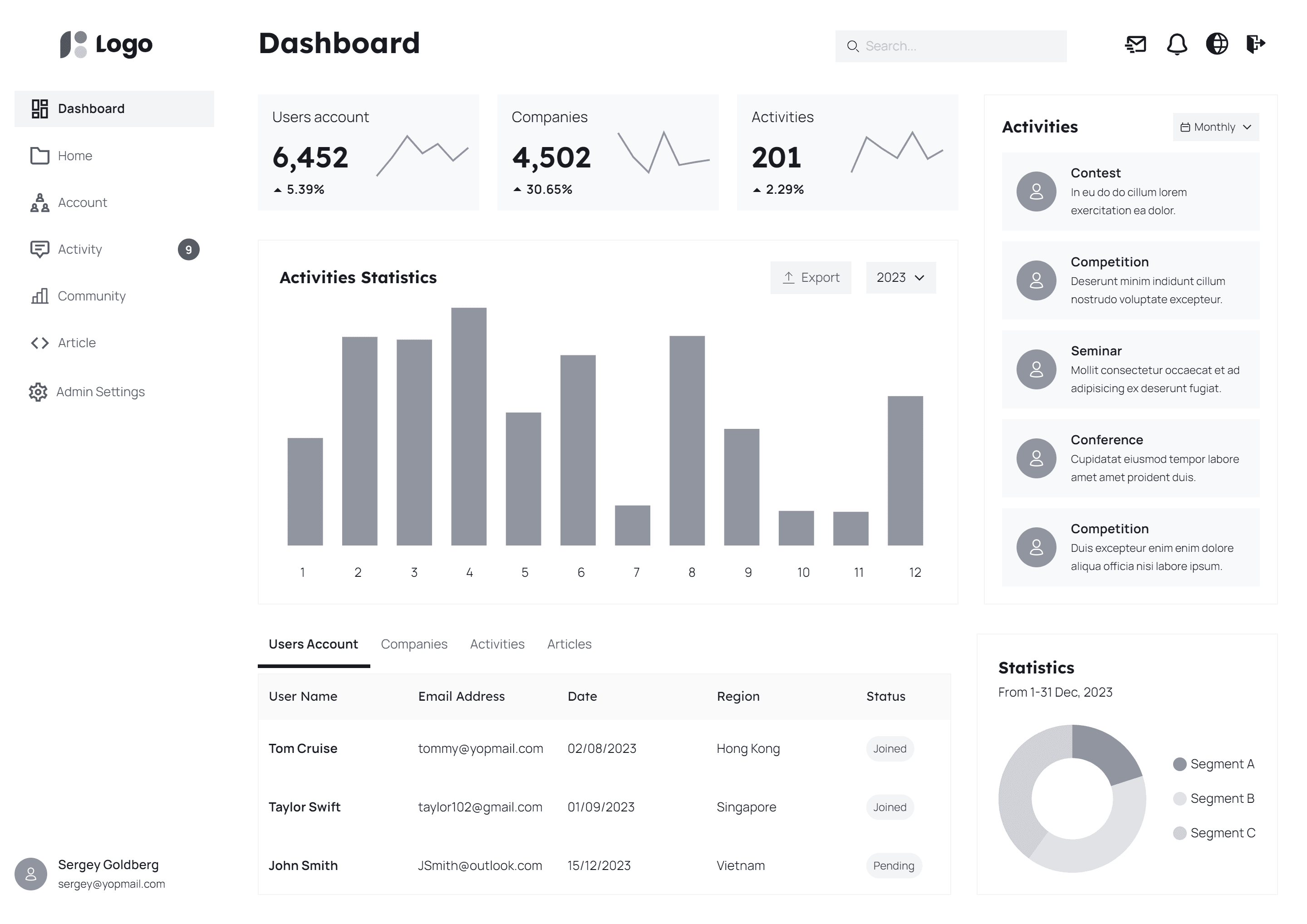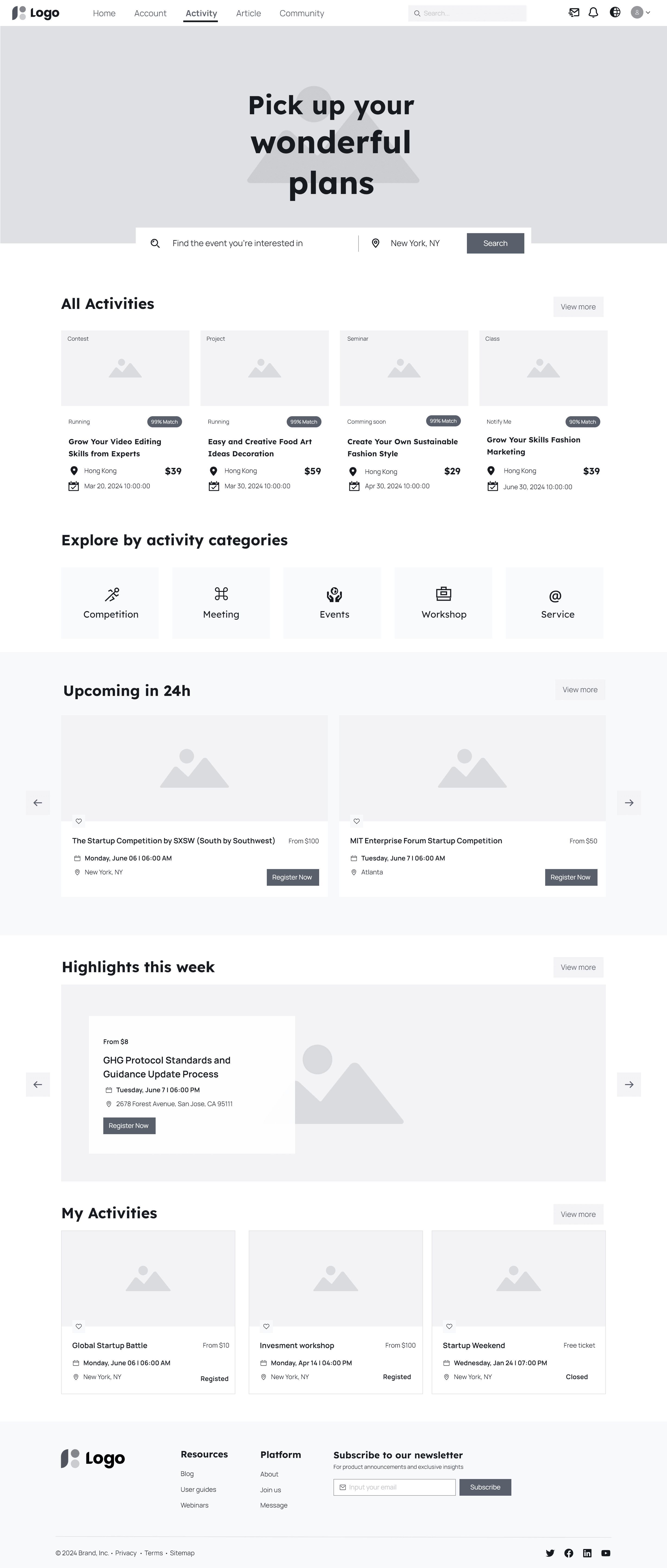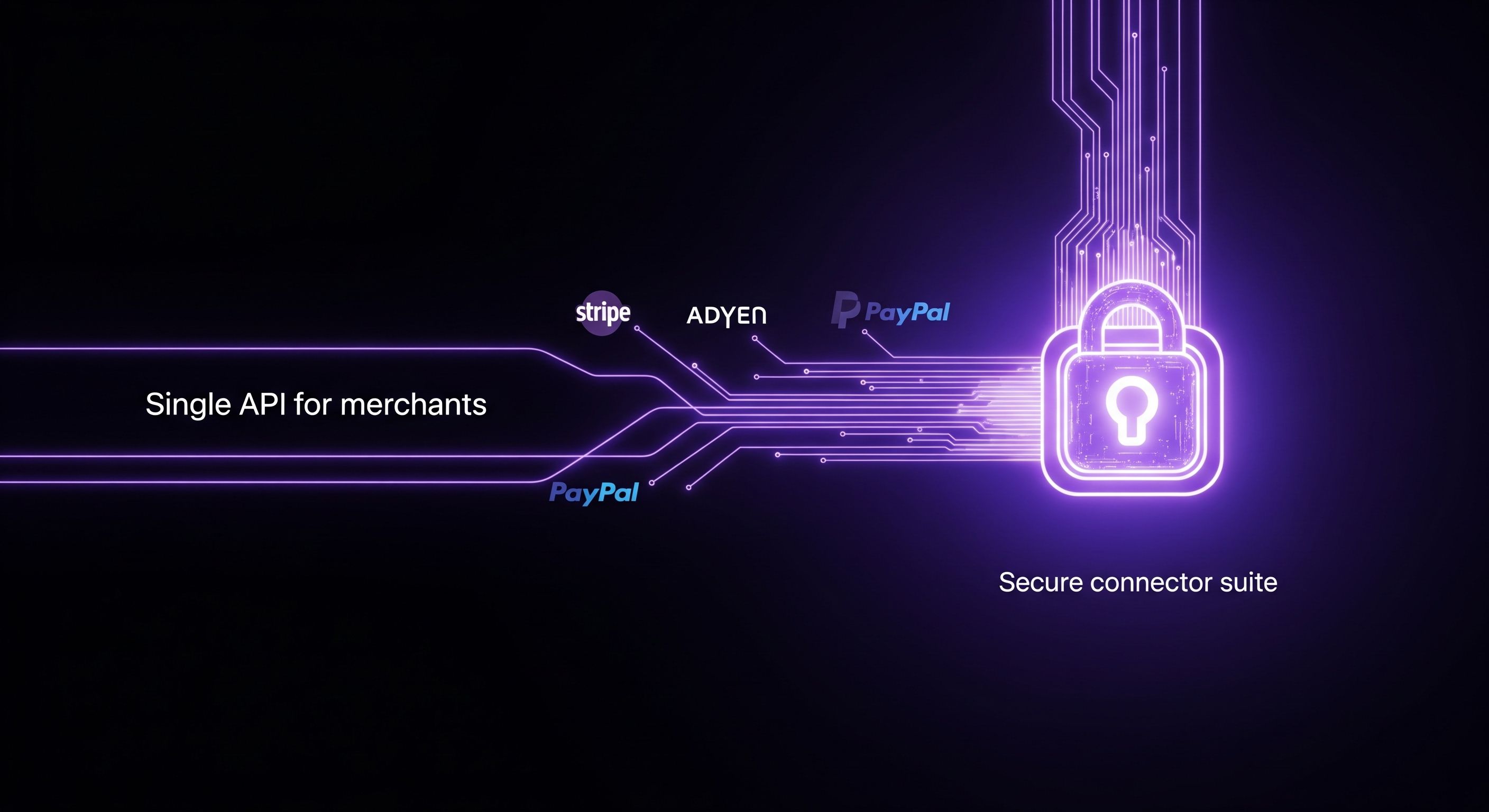An AI-Powered B2B Matchmaking Platform

Singapore Customer
Our client, a key player in Singapore's innovation ecosystem, is dedicated to fostering growth by connecting promising startups with strategic investors. Their ability to do this at scale was hampered by a manual matchmaking process and inconsistent data siloed across multiple platforms.
1. Requirement
1.1. Purpose
Our primary purpose was to create a vibrant digital ecosystem that fosters growth and investment opportunities for Singapore's startup community. To do this, we built a multi-tenant platform featuring a powerful AI matching algorithm and automated workflows to connect the right startups with the right investors with unprecedented efficiency.
1.2. Detail Requirement
Multi-Tenant Architecture and Administration
- The system must be built on a multi-tenant architecture, allowing different organizations (e.g., VCs, incubators) to register and operate as a secure, isolated tenant.
- A Platform Administrator role must be established with global oversight and the ability to manage all system-wide functions and individual tenants.
- Each tenant must have a Tenant Administrator role, providing full control over their own environment.
Flexible and Customizable Workflow Engine
- A powerful workflow engine must be developed to automate key processes such as user applications, activity management, and account approvals at the tenant level.
- Administrators must be able to visually configure and customize these workflows by adding rules and arranging different modules in various sequences.
- The workflow engine must be designed for extensibility, with the capability to call other internal modules and support future third-party integrations.
AI-Powered Matchmaking and Analytics
- An AI recommendation engine must be developed to analyze rich profile data and intelligently match startups with the most suitable investors (and vice versa).
- The system must provide in-depth analytics, including a calculated "suitability score," to evaluate potential candidates for specific investment or networking activities.
- This analytical data must also be leveraged to support targeted marketing campaigns for events organized within each tenant.
Centralized Activity Management
- A comprehensive Activity Management module must be implemented for creating, managing, and tracking a wide range of events (e.g., funding rounds, competitions, webinars).
- All activity data and participation statistics must be collected and made available through dashboards and reports for both tenant and platform administrators.
2. Customer Problems
- Time-Consuming and Ineffective Manual Matchmaking: The core process of connecting startups with suitable investors was performed manually. This was not only incredibly time-consuming and resource-intensive, but it also relied on the personal knowledge of a few individuals, limiting the scale and quality of potential matches.
- Fragmented Systems and Inconsistent Data: Operating across two separate websites and various disconnected communication channels created data chaos. Information was frequently out of sync, leading to inconsistent records for startups and investors, and making it impossible to get a single, reliable view of their ecosystem.
- Lack of Standardized and Adaptable Workflows: There was no unified system to manage the diverse lifecycle of their many activities (from hackathons to funding rounds). Each event was managed using ad-hoc manual tools, and there was no way to create tailored yet repeatable workflows, which often resulted in misunderstandings and missed deadlines.
1. Programming Language
- Node.js for Server, Strapi CMS
- Reactjs for Frontend
- Java for workflow engine
- Javascript/Typescript
2. Framework
- Expressjs Framework
- Create React App Framework
3. Third Party
- Rocket.Chat
- Flowable
- Strapi
- Keycloak
- Chat GPT
4. Database
- MySQL (Version 8)
- Elastic search (Version 8.10.4)
- Postgresql
1. Challenge
a. Business challenges:
- Manage the users account and entities across the tenants in the platform
- Matching the users, entities to the activities within the tenant and across the tenants in the platform
- Applying the workflow engine for the activity, account management
- Collecting and scanning the user profile, entity profile to provide the data for analysis and matching
b. Technical challenges:
- Form builder management
- Dynamically configure data fields and attribute groups in the master data
- Dynamically configure workflow and add new rules to the workflow
- AI recommendation for the matching algorithm
- Manage user id and company id across the tenants in the platform
- Manage tags in the tenants and platform
2. How to resolve these challenges:
a. Business challenges
Manage the users account and entities across the tenants in the platform:
- Build a centralized user and entity account management system, using distributed databases to store information from different tenants.
- Design a multi-tenant database model that supports management, allowing for data separation and mapping of account and entity data per tenant.
- Identify and implement Role-Based Access Control (RBAC) rules and permissions to control user privileges within each tenant and across tenants.
Matching the users, entities to the activities within the tenant and across the tenants in the platform:
- Develop an intelligent matching algorithm based on criteria such as skills, permissions, activity history, and preferences of users and entities.
- Utilize machine learning techniques and classification models to determine the compatibility of users and entities with activities.
- Optimize the matching algorithm through user feedback collection and utilize statistical data to improve matching results.
Applying the workflow engine for the activity, account management:
- Build a flexible and customizable workflow management system to streamline the steps involved in activity and account management.
- Use event-driven models to trigger processes, including approval workflows, notifications, and data updates.
- Integrate process management tools like BPMN (Business Process Model and Notation) to design and manage workflows in a visual manner.
Collecting and scanning the user profile, entity profile to provide the data for analysis and matching:
- Design a user interface that allows users to input detailed personal information and entity information.
- Employ natural language processing (NLP) tools and libraries to scan and analyze information from user profiles and entity profiles.
- Build a data storage system for analytics to store and retrieve information from user profiles and entity profiles quickly and efficiently.
b. Technical challenges:
- Break down complex challenges into smaller, manageable tasks and tackle them systematically.
- Leverage software development frameworks, libraries, and tools that can simplify the implementation of complex functionalities.
1. Home page

2. Dashboard

3. Activity

4. Admin Setting

Other works

Empowering Teams with No-Code Workflows
Our no-code workflow builder allows a global event organizer's team to easily design, manage, and automate complex events.

Unifying Top Payment Gateways with a Single, Secure Suite
Our secure, PCI-compliant connector unifies top payment gateways behind a single API with dynamic routing rules.

Building a Scalable Telemetry Platform for 100,000+ Devices
We built a platform to manage telemetry from 100,000+ devices, enabling custom dashboards, AI-driven alerts, and automated invoicing.
